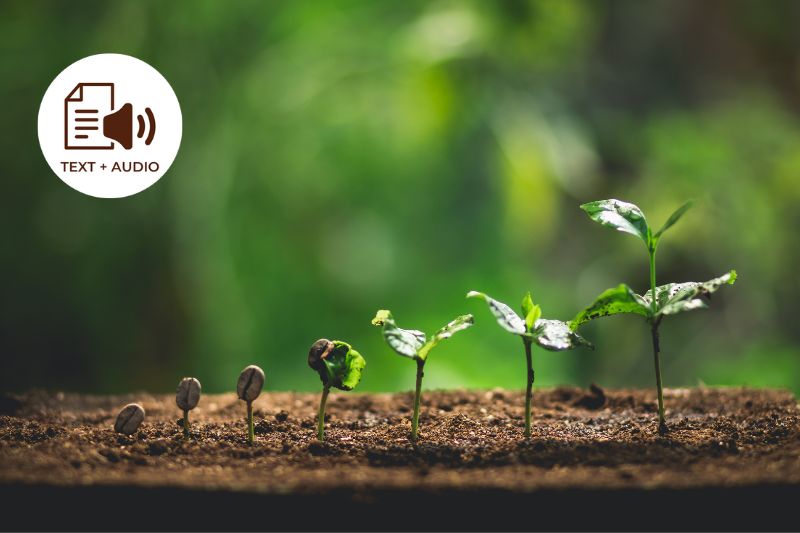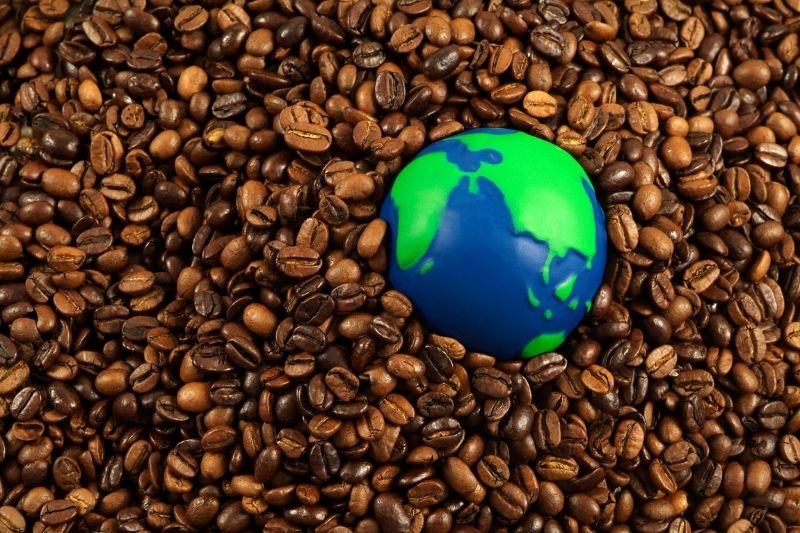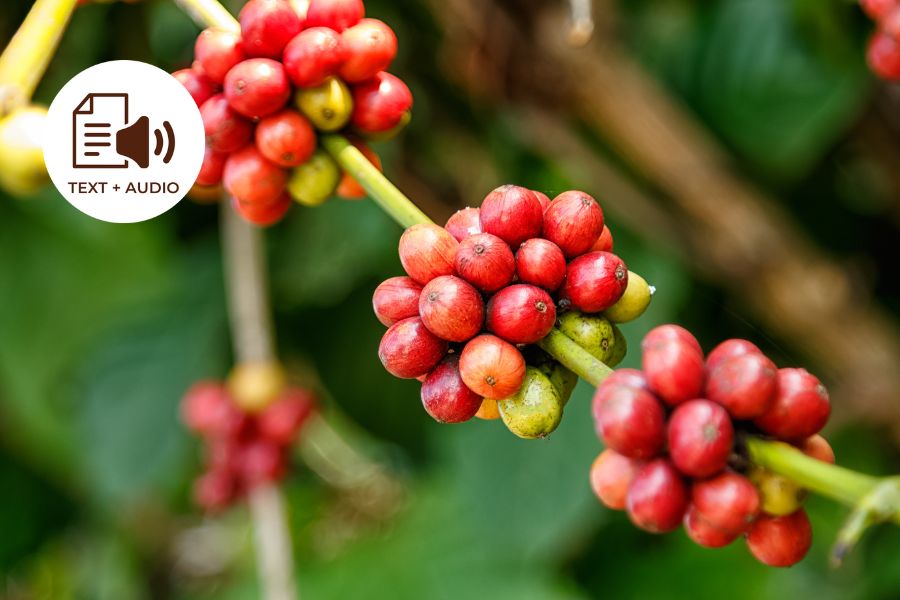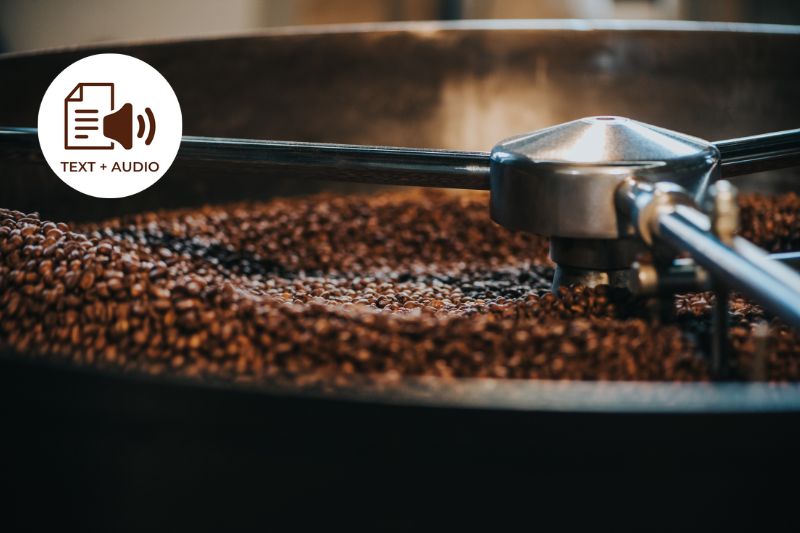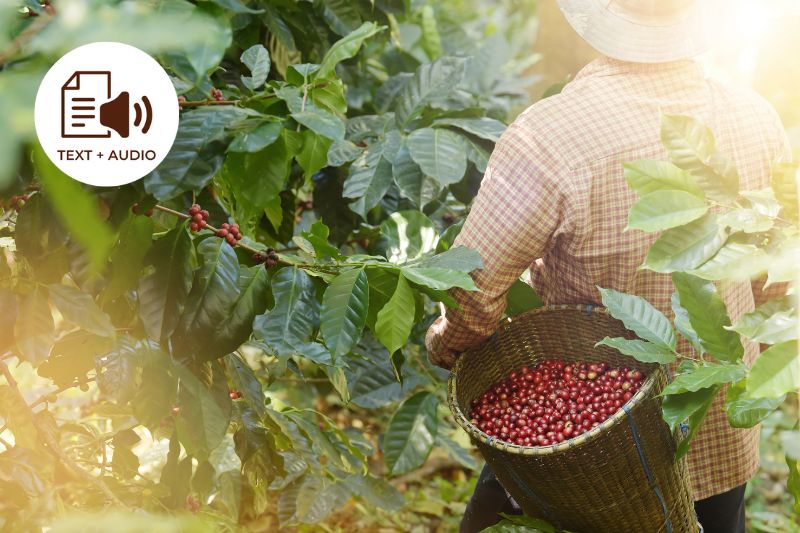There are so many variables that affect the taste of coffee that I could be writing all day long! However, it all starts in one place: the coffee farm.
In past articles I’ve talked about how soil and climatic conditions affect the taste of coffee and why, so now it’s time to delve a bit deeper into the harvest and processing methods to understand how they can give coffee beans certain unique attributes.

There are basically three steps that take place before the coffee travels all the way to the roaster:
- Harvesting
- Sorting
- Processing
Let’s find out a bit more about these stages!
How Harvesting Works
The coffee cherries can be harvested using different methods, each with their advantages and disadvantages:
- Picking
- Stripping
- Machine harvesting
During “picking”, the condition of the fruit is checked every eight to ten days and each coffee cherry is picked individually as soon as it is ripe. Although this is very time-consuming and labor-intensive, it guarantees the highest quality, as only ripe fruits are processed.
Another form of manual harvesting is "stripping": Instead of the individual fruits, the pickers pull off the whole plant at once, with all fruits falling into a cloth lying on the ground. This method saves more time than picking, but some unripe coffee cherries are also harvested.
With machine harvesting, all fruits are harvested at once. Although this method is by far the fastest, it has high wastage because unripe coffee cherries are also harvested. In addition, in most cases it is not possible to use a machine because either the nature of the cultivation area is unsuitable or it is only worth purchasing such a machine for very large plantations such as those in Brazil.
We chose to collaborate only with farms that use the first method: picking. This guarantees not only the highest quality of the coffee we offer you but also that farm viability remains sustainable through continued work opportunities.

Manual Screen Sorting
Right after the harvest comes the coffee bean sorting stage. This basically means that all the beans need to be sorted based on two factors:
- Size/Density
- Colour
The reason the coffee beans need to be sorted is firstly, to ensure that there are no defects or bad quality coffee beans and second so that all the beans that have the same size, end up in the same bag.
The size plays a big role because if they are not of similar size they will be uniformly roasted, resulting in unpleasant flavour in your cup.
For the purposes of sorting coffee beans farms can either choose machinery that does all the work, or manual screen sorting. This second method is done by workers at the farm that handpick and sort the beans according to their colour and then pass them through sieves to decide their size. These sieves have a few different levels so all the beans end up in the right one according to their size.

All the farms we cooperate with are using the manual screen sorting method and we think this is the best method out of the two as well, because it’s much more detailed, ensures better quality and is a sustainable solution that offers jobs to a lot of farm workers.
Here’s an example from our exclusive contract farm from Bali Batur Mountain in Indonesia.

Different Methods of Coffee Processing
The coffee bean is the seed of the coffee cherry. To detach the coffee bean from the pulp of the cherry, a distinction is usually made between two methods: washed and sun-dried (natural) coffee.
However, there is also a third one we would like to talk to you about today: the Gilling Basah process.
Let’s find out what these types of processes are and which tasting attributes they give to coffee!
The Natural - Sun Dried Process
The original method of drying cherries in the sun is relatively simple. The red coffee cherries are spread out on cement floors, tables or mashed earth and turned regularly so that they dry evenly without starting to rot.
Sun drying can take up to five weeks, depending on the climate. The advantage is that you do not have to rely on the use of water for sun drying and can therefore also use this method in arid regions.

There has been a great improvement in the quality of sun-dried coffees the past decades, since the processing takes place with the use of higher quality drying beds and shade drying nets.
In addition, the cooperative managers are placing more and more emphasis on better training for the workers on the drying beds so that the cherries are turned regularly and the development of a fermented taste is prevented.
After enough water has been removed from the pulp, the beans can be removed from the cherry in a machine by friction and under pressure. Then all the beans are sorted by hand to sift out broken beans, pebbles or other foreign bodies.
The natural sun drying process in combination with manual screen sorting give the coffee beans certain attributes such as subtle sweetness and delicate fruitiness. If you enjoy your coffee with a delicate sweet and fruity flavour then this one might be just right for you.

The Washed Process
This process is quite different to the natural one. After manual screen sorting has taken place, further processing of wet coffee should take place within 8 hours of harvesting, otherwise the fermentation process will start. A so-called wet mill, which consists of different machines, is used for wet processing.
With machine processing, the cherries are first placed in a depulper station, in which the outer skin and pulp are squeezed off. This station is also known as a wet mill. In modern machines a green cherry separator is connected in front of the depulper, which automatically sorts out green, unripe cherries.

After pulping, there is still a slimy pectin layer around the bean, the mucilage. In the next step, this is mechanically separated from the bean with the addition of water, by the Mucilage Remover. The beans then move with the flow of water into a concrete water tank.
The beans stay under water overnight, so that the rest of the mucilage comes off. The beans are also sorted out in the water tank: the good beans sink to the bottom, the so-called floaters, beans that are too light, float up.
Now the beans are still surrounded by the parchment skin and the silver skin underneath; the coffee in this state is also called parchment or parchment coffee. To gently dry the coffee, it is spread out on drying beds. These are large tables that are placed just above the floor.
Here the beans dry in the sun for 8 to 10 days, are turned regularly and remain covered at night and during the midday heat. The parchment skin protects the beans by ensuring that they dry slowly and evenly.

Beans with damaged parchment skin must be discarded. The parchment skin is a protective layer on the beans, which should remain around the bean until shortly before export. In this way, the taste and aroma of the coffee are preserved as much as possible.
After the beans dry gently on the drying beds in the shade on the first day, they will be exposed to more sun in the next few days. After approx. 10 to 14 days there remains a residual moisture of approx. 10.5% to 11.5%.
The dried parchment coffee is then prepared for export and then our roaster team works their magic to bring those perfectly roasted beans to you.
Flavor attributes of washed coffees include an amazing balance between acidity and bitterness and a smooth buttery mouthfeel. This is a very popular coffee because it’s easy to drink, without intense tasting notes.

The Gilling Basah Process
Since the first coffee plants were introduced to Sumatra by the Dutch in the middle of the 17th century, they have been an integral part of the island's rich vegetation. The impressive volcanic landscape shapes the image of Sumatra.
On the mountain slopes at heights of up to 1650 m above sea level the arabica coffee trees thrive on the fertile volcanic soils. These have a high concentration of trace elements and at the same time perfect water storage capacity.
In ideal climatic conditions, in the shade of the giant trees, which often exceed 80 meters in height, the coffee cherries ripen and develop their characteristic nuances.
A special feature of this coffee is its traditional, complicated preparation and processing - the so-called "Giling Basah" method, which creates typically full-bodied and wild aromas.

First, the coffee cherries are pulped (the beans are separated from the peel), and the pulp remains are not decomposed as usual by means of fermentation in the water. In the next step, instead, the pulp is removed by manual rubbing in the sand.
Natural drying takes place in the open air for several days and only then are the parchment shells that have become brittle peeled off. Both the harvest and the very unusual form of processing are elaborately handcrafted and lead to an exotic taste experience in order to meet the highest demands - a premium product from Indonesia.
With its strong body, subtle herbal nuances and strong zender notes, such a coffee has an unusually large abundance of aromas. Its spicy taste, fruity in the finish, accompanied by only a little acidity, harmonizes excellently.

The Honey Process
The "honey-processed" method was first used in Costa Rica in 2003 at the suggestion of a Japanese coffee importer who was visiting the country. This had received inquiries from the Italian coffee specialist Illy and the coffee company Guataro from Japan, who wanted to expand their range with new flavors.
Up until then, both of them had been purchasing a specially produced coffee from Brazil for their top-quality coffees, which had gone through the drying process with the entire pulp, using the natural process.
The Japanese idea for creating new flavors was to wash the coffee cherry, but only partially. This removes the peel but leaves the soft, sticky pulp on the bean. Because it feels almost like honey, the term "honey processed" was born - real honey was not involved. The new process significantly improved the potential of Costa Rican coffee because it gave it more body and taste with a much more pleasant acidity.
Depending on the drying time and technique, a distinction is made between the three levels of "honey processed" coffee: yellow, red and black in. The differences are mainly in the taste. The yellow is the first level. The beans are simply dried in the sun. After eight days you will have achieved the desired light yellow color and the optimal level of moisture.
The red stage lasts longer because the drying process takes place here on cloudy days and takes about twelve days. For the black stage, the beans are placed on a rack that is reminiscent of traditional African beds and covered with a black film to dry. The "black honey" produced in this way has the richest body in terms of taste and is particularly spicy.
Because this production method is the most time-consuming and labor-intensive, black is also the most expensive “honey processed” coffee. The honey process method quickly spread to other countries and now many farms use it worldwide.

Final Thoughts
With so many processing and sorting options to choose from, it’s definitely no wonder that coffee beans can have such a different flavour result in your cup!
We always strive to work with sustainable farms that use methods which best compliment the coffee bean characteristics and concentrate on their quality.
I hope this article has helped you understand what happens in the coffee farms and how all that plays a role in the taste profile in your cup. One thing is for sure, with so many options to choose from between washed, natural and Gilling Basah, it’s definitely a fun experience discovering which one is your favourite!
Get Free Bonus Books

Sign up for free to the Coffee Club to get advice and exclusive articles about how to choose Japanese Coffee, and tips, tricks, and recipes for enjoying Japanese coffee.
About the author
Kei Nishida
Author, CEO Dream of Japan
Certification: PMP, BS in Computer Science
Education: Western Washington University
Kei Nishida is a passionate Japanese tea and coffee connoisseur, writer, and the founder and CEO of Japanese Coffee Co. and Japanese Green Tea Co., both part of Dream of Japan.
His journey began with a mission to introduce the world to the unparalleled quality of Japanese green tea. Through Japanese Green Tea Co., he established the only company that sources premium tea grown in nutrient-rich sugarcane soil—an innovation that led to multiple Global Tea Champion awards.
Building on this success and his passion for Japanese craftsmanship, Kei expanded into the world of coffee, pioneering the launch of Japanese Coffee Co., the first company to bring Sumiyaki charcoal-roasted coffee to a global audience. His dedication to authenticity and quality ensures that this traditional Japanese roasting method, once a well-kept secret, is now enjoyed worldwide.
Beyond tea and coffee, Kei has also introduced Japan’s legendary craftsmanship to the world through Japanese Knife Co., making handmade katana-style knives—crafted by a renowned katana maker—available outside Japan for the first time.
Kei’s journey continues as he seeks out and shares the hidden treasures of Japan, one cup and one blade at a time.
Learn more about Kei


